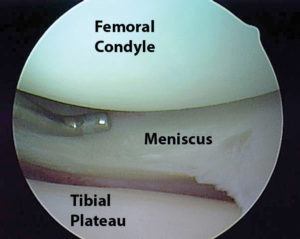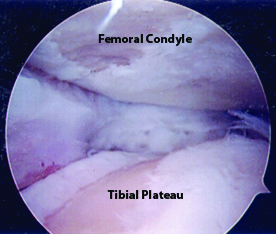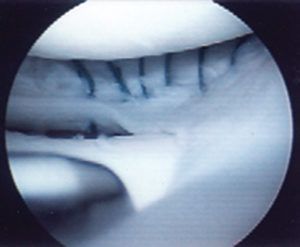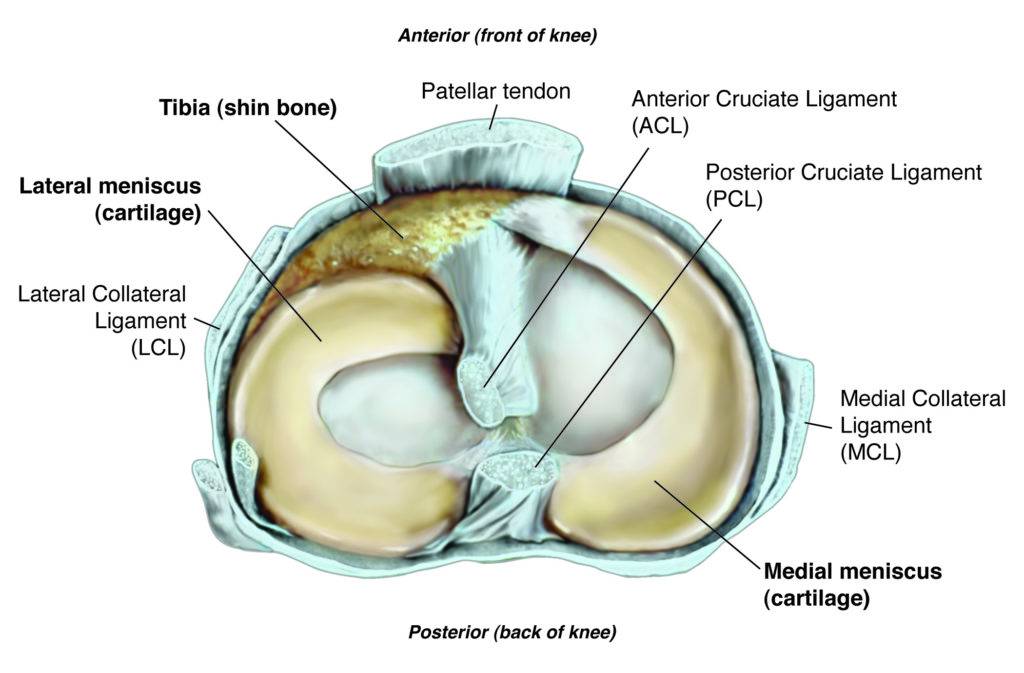Knee Sugery & Rehabilitation
Damage to the articular cartilage of the knee through injury (post-traumatic arthritis) or “wear and tear” (osteoarthritis) is one of the most common yet difficult problems seen by orthopedists today. The gradual deterioration of the knee joint, typically known as osteoarthritis, affects millions of individuals each year. If you suffer from this problem and are over the age of 60, a total knee replacement provides dramatic and reliable relief from pain and is the best treatment. However, if you are younger, total knee replacement is not the best option. Before deciding the proper treatment, we have to thoroughly understand what is exactly injured and wrong with your knee.
Why Choose NKI for your Cartilage Restoration
The preservation of meniscal tissue is now understood to be extremely important, and we make every attempt to use advanced surgical techniques and a carefully constructed rehabilitation program to gain successful results. Our extensive experience with this procedure enables us to be very aggressive in our efforts to save the mensicus, especially in young patients and highly competitive athletes.
Frequently Asked Questions
Cartilage Resttoration What you need to know:
What is Cartilage?
Actually the word cartilage is a general term that describes different structures of the knee. While the composition of these structures is similar, they have different functions or jobs in the knee:
The meniscus acts as a cushion and stabilizing platform between the femur (thigh bone) and tibia (shin bone). There are two menisci in the knee – a medial (or inside) meniscus and a lateral (or outside) meniscus. The menisci are commonly damaged through twisting injuries. Fortunately, some meniscal tears heal on their own and never require surgery. However, at least one-half of injured menisci do not heal and cause pain, locking, and catching. Many surgeons will remove the damaged sections of the menisci to relieve these symptoms. If too much tissue is removed, the meniscus loses its ability to act as the cushion between the femur and tibia, and damage to the articular cartilage begins.
The articular cartilage, also known as the joint lining, is a protective layer of tissue located on the ends of the bones that come together in the knee joint. These bones are the femur (thigh bone), tibia (shin bone), and patella (kneecap). An arthroscopic photograph of a knee with normal articular cartilage and meniscus is shown below:

Articular cartilage may be damaged through an injury or gradually deteriorate over time from a variety of factors. When the articular cartilage is damaged or injured, it usually goes through a staged process of softening, flaking, fragmenting, and finally complete loss where the underlying subchondral bone is exposed. An arthroscopic photograph of a knee with severe damage to the articular cartilage, and no meniscus tissue left, is shown below:

This process is commonly known as osteoarthritis. Damaged or injured articular cartilage has a very limited ability to heal itself. Therefore, once the process of osteoarthritis starts, there is little that the body can do to stop the deterioration.
The stages of deterioration to articular cartilage are shown below. We use a classification system to grade cartilage damage. The grade assigned depends on the size and depth of the lesion. As you can see, the worst is Grade 3B, which all of the articular cartilage has worn away and the underlying subchondral bone may also be eroded.
To complicate matters even further, some knees have additional problems because the entire leg is out of alignment or the leg is unstable due to an injury to a knee ligament. The loss of a meniscus can sometimes cause the leg to bow and lose its normal alignment. In other cases, patients are born with bowed legs and over the years, the pressure on one side of the knee causes damage to the meniscus and articular cartilage. Some knees that have suffered injury to the anterior cruciate ligament have many giving-way reinjuries that produce damage to the menisci and articular cartilage. At Cincinnati Sportsmedicine, knees with these complex problems are seen all too frequently on a weekly basis.
What Can Be Done?
The good news is that important advances in medical knowledge and surgery now provide several options to patients with these problems. Tears to the menisci can often be repaired with an 80-98% success rate, depending on exactly where the meniscus is torn. An arthroscopic photograph of a repaired meniscus tear is shown below:

We can also transplant new menisci into the knee from donors. It is important to perform these transplants before too much damage has occurred to the articular cartilage. A transplanted meniscus is shown in the artist’s illustration below:
Leg alignment problems can be corrected through osteotomy which is a highly successful technique to relieve pressure on the inside (medial) portion of the knee. And, our success rate for arthroscopic-assisted anterior cruciate ligament reconstruction of 94% is one of the highest reported in the country. Patients with these complex problems must realize that all of the problems in the knee must be corrected in order for cartilage restoration procedures to be effective.
What is the meniscus?
The menisci, two c-shaped wafers made of cartilage, act as shock absorbers within the knee and add to joint stability.

Why do I need my meniscus?
With activity such as walking, climbing stairs, or running, forces as great as 3 to 6 times your body weight cross the knee joint. In other words, if you weigh 150 pounds, your knee joint feels 450 to 900 pounds of force when you run or stoop. The menisci normally diffuse these forces over a wide area. But if the meniscus is torn or badly damaged, the forces are concentrated onto a small area of the joint. Eventually, they cause the joint lining to crack and fragment, the joint begins to deteriorate and pain and swelling result. This process is called “arthritis”.
How do I know if I’ve torn my meniscus?
Most people have the following symptoms:
- Joint line pain – pain along the inside or outside of the knee
- Locking or catching
- Knee joint swelling
When should I see a physician?
If your symptoms last more than two days, you should seek the proper medical care; a sports medicine trained physician. If your pain and swelling are severe, seek attention immediately.
Fortunately, approximately 50% of meniscus tears heal without surgery. Even so, it is important to see a sports medicine physician who will tell you exactly what you are dealing with and initiate the proper conservative treatment. It is important to learn safe and effective exercises to perform daily to keep your muscles strong, even if surgery is not required.
Why should I see a sports medicine trained orthopaedic surgeon?
The training of an orthopaedic surgeon involves many years of undergraduate, medical school, and residency education. The specialization of sports medicine involves additional training, usually at an educational center where a fellowship year is completed. This involves advanced training in arthroscopic surgery, required in the treatment of most knee, shoulder, ankle, elbow and sports medicine-related injuries. The sports medicine-trained surgeon also has knowledge of specific rehabilitation and muscle performance issues to safely regain function and return patients to athletics. A sports medicine center combines the disciplines of physicians, physical therapists, athletic trainers, and more to totally heal all aspects of an injury.
Will I need surgery?
There are four factors that determine the answer to that question.
The answer is “no” if:
- Multiple suture placement for complex meniscus tears extending into the central one-third avaslar region.
- Your symptoms go away within a few weeks. A meniscus tear may heal on its own. A small meniscus tear in the outer portion or periphery of the meniscus that has a rich blood supply may heal. If your symptoms do go away that does not mean you should not seek medical care. Conservative treatment does not mean no treatment. You must still be under an orthopaedic surgeon’s care and go through rehabilitation to strengthen your knee and maintain its proper range of motion.
The answer is definitely “yes” if:
- You can’t bend or extend your knee. If you have a meniscus tear your knee may catch or lock, indicating that the meniscus is “flipped up into the joint” preventing knee motion. This occurrence may show up as a feeling of your knee is locked in position.
- You are young, active and your symptoms last several weeks.
The answer is possibly “yes” if:
- A physician has confirmed you have a meniscus tear and you’ve undergone a one to two month rehabilitation program with little symptom relief. Some large tears should be repaired early to save the meniscus. If not repaired, the meniscus may become dislodged in the knee and incur further damage making it unrepairable. An MRI may be useful to determine the extent of a meniscus tear and if early operative treatment is required.
What are my surgical options?
There are three types of arthroscopic meniscus procedures. The type of procedure used depends on where the tear is located.
- Simple meniscus tears. Meniscus tears in the outer one-third, or periphery, of the meniscus (which contains a rich blood supply) can be repaired with a 95% chance of successful healing. There are no restrictions, such as age, other injuries, or activity level for this procedure.
- Complex meniscus tears. Meniscus tears extending into the central one-third protion of the meniscus, which has a limited blood supply, can also be repaired in many cases. In the past, surgeons elected to remove these types of tears due to the difficulty in achieving a repair which would heal. With techniques developed at our Center, our philosophy is to now aggressively attempt to save the meniscus if possible. Our success rate for these types of repairs is 80% – and depends on the healing ability of the patient after the repair has been performed. We have found no restrictions to repairing these types of tears – even in patients up to 55 years of age have successfully had this operation. It is important to check with your surgeon before surgery if advanced suturing and repair techniques would be used to repair complex tears.
- Total menisectomy. If the meniscus has multiple tears located in different regions, is shredded or severely deteriorated due to multiple injuries, then it cannot be repaired. It may be possible to save some of the meniscus, but if it must be removed it can be later replaced with a transplant.
What can I expect after the surgery and how can I avoid complications?
Rehabilitation is an essential element or your recovery. The success of your meniscus repair surgery is not only determined by an expert surgeon, but also by following a rigorous rehabilitation program. YOUR SURGERY MAY FAIL IF YOU DO NOT FOLLOW THE RIGHT REHABILITATION PROGRAM.
Your rehabilitation program will depend on whether your tear was simple or complex.
Simple meniscus tears. Rehabilitation following surgery for this type of tear is typically:
- Immediate motion and exercises following surgery
- Crutches for four weeks
- Resumption of running, if desired, after four months
- Full activity at six months
- NO SQUATTING, KNEELING OR DEEP KNEE FLEXING FOR SIX MONTHS
Complex meniscus tears. Rehabilitation following surgery for this type of tear is typically:
The Noyes Knee Institute has one of the lowest meniscus tears repair complication rates reported in the medical literature because our patients follow these rehabilitation guidelines.
-
- Immediate motion and exercises following surgery
- Crutches for six to eight weeks
- Resumption of running, if desired, at 6 month
- Full activity at seven to nine months
- NO SQUATTING, KNEELING OR DEEP KNEE FLEXING FOR SIX MONTHS
Click here to see our detailed rehabilitation protocol
Many meniscus tears repairs that fail do so because the patient was allowed to return to full activity at three months or was allowed to kneel or squat early in their recovery. A meniscus repair takes time to heal. We insist that our patients, be patient. It is worth the wait.
What if after my surgery, I’m still having problems with my knee?
If you are still having problems with pain, swelling, locking or catching there is the chance the meniscus has torn again. With proper examination, a physician can tell if this has happened. Should this occur, the meniscus can be repaired again or the portion of the meniscus that did not heal can be removed.
